Top 8 Interesting Facts about Septimius Severus
From 193 to 211, Lucius Septimius Severus (11 April 145 – 4 February 211) was the Roman Emperor. He was born in the Roman province of Africa in Leptis Magna ... read more...(modern-day Al-Khums, Libya). He rose through the customary succession of offices as a young man during the reigns of Marcus Aurelius and Commodus. During the Year of the Five Emperors in 193, Severus seized power following the death of Emperor Pertinax. Here are some interesting facts about Septimius Severus that Toplist compiled.
-
One of the most interesting facts about Septimius Severus is that he came from an honorable family. Septimius Severus was born on April 11, 145, as the son of Publius Septimius Geta and Fulvia Pia, into a wealthy and prominent equestrian family. Severus was of Italic and Punic descent; his Roman ancestors came from his mother's side, while his Punic ancestors came from his father's. He is considered the first provincial emperor due to his father's family history, as he was the first emperor not only born in the provinces but also into a provincial family of non-Italian heritage. Severus' father was a minor provincial with no political clout, although he had two relatives, Publius Septimius Aper and Gaius Septimius Severus, who served as consuls under Emperor Antoninus Pius r. 138-161.
His mother's relatives had migrated from Italy to North Africa; they were descendants of the gens Fulvia, an Italian noble family descended from Tusculum. Septimius Severus had two siblings: a younger sister, Septimia Octavilla, and an elder brother, Publius Septimius Geta. Gaius Fulvius Plautianus, the praetorian prefect and consul, was Severus' maternal cousin. Septimius Severus was born and raised in Leptis Magna. He was fluent in Punic, but he was also educated in Latin and Greek, which he spoke with a slight accent. Little is known about the young Severus' education, but according to Cassius Dio, the kid wished for more education than he received. Severus, presumably, received oratory lessons: at the age of 17, he delivered his first public speech.
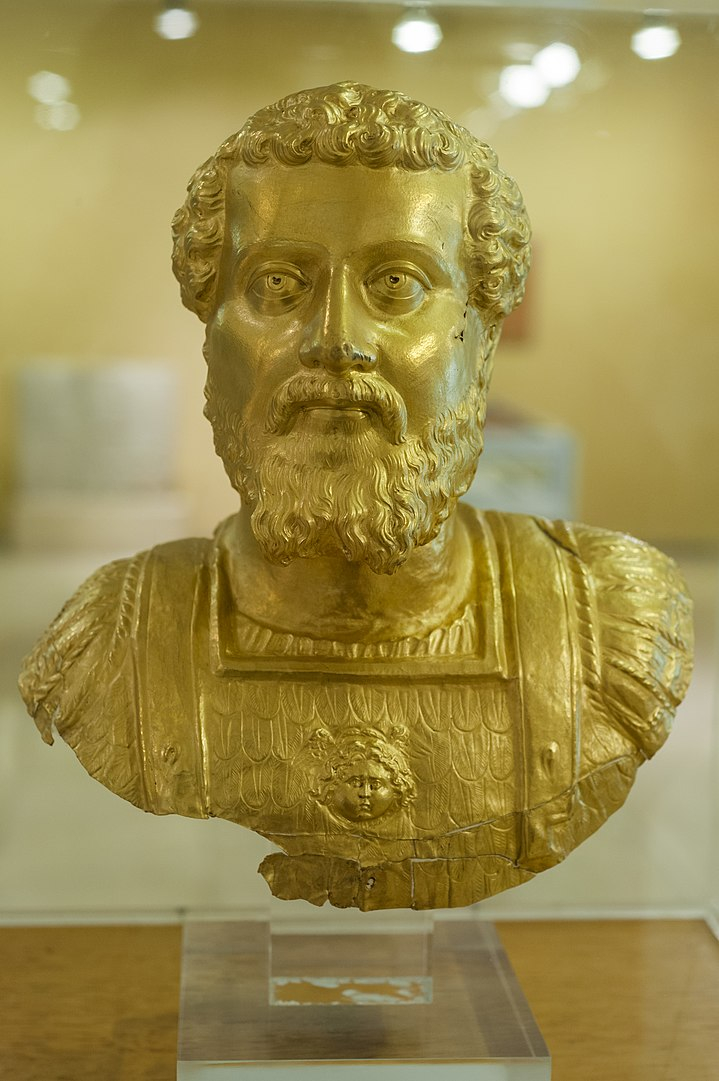
en.wikipedia.org 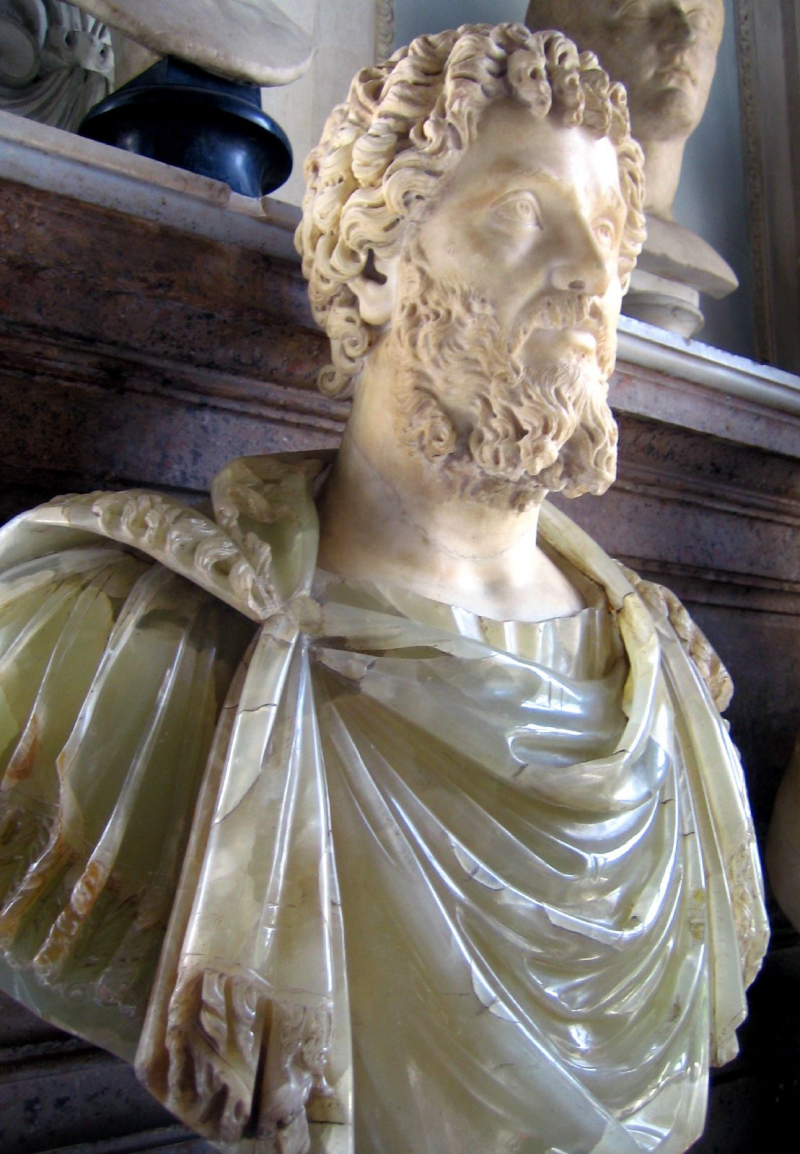
en.wikipedia.org -
One of the interesting facts about Septimius Severus is that he started his public career in the senatorial ranks. The emperor Marcus Aurelius (r. 161-180) elevated him to the senatorial ranks on the recommendation of his relative Gaius Septimius Severus. Membership in the senatorial order was required for posts in the cursus honorum and admission to the Roman Senate. Nonetheless, it appears that Severus' career in the 160s was fraught with troubles.
He most likely worked as a vigintivir in Rome, supervising road maintenance in and around the city, and he may have appeared in court as an advocate. He was the State Attorney during Marcus Aurelius' reign. He excluded the military tribunate from the cursus honorum, however, and had to postpone his quaestorship until he attained the required minimum age of 25. To make matters worse, the Antonine Plague swept through the capital in 166.
Severus reached the required age to become a quaestor at the end of 169 and returned to Rome. On December 5, he took office and was formally admitted to the Roman Senate. Despite holding an astounding number of positions in fast succession between 170 and 180, his efforts went largely forgotten. The Antonine Plague had reduced the senatorial ranks, and with skilled men in scarce supply, Severus' career progressed more methodically than it might have otherwise.
The unexpected death of his father required him to return to Leptis Magna to settle family matters. Mauri tribesmen invaded southern Spain before he could leave Africa. The emperor was given control of the province, while the Senate was given temporary rule of Sardinia as reparation. As a result, Septimius Severus spent the rest of his second term as quaestor on the Italian island of Sardinia. Following the end of this tenure, Septimius Severus went to Rome and was appointed tribune of the plebs, a prestigious legislative position with the distinction of being the emperor's candidate.
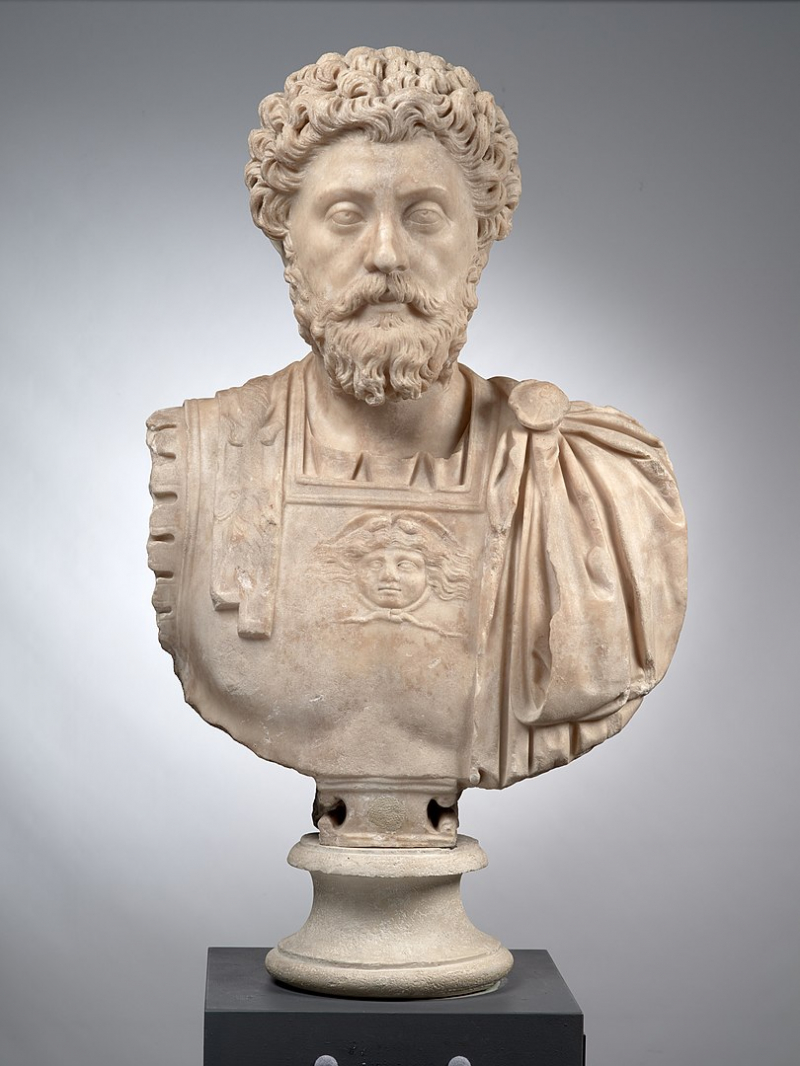
Marcus Aurelius -en.wikipedia.org 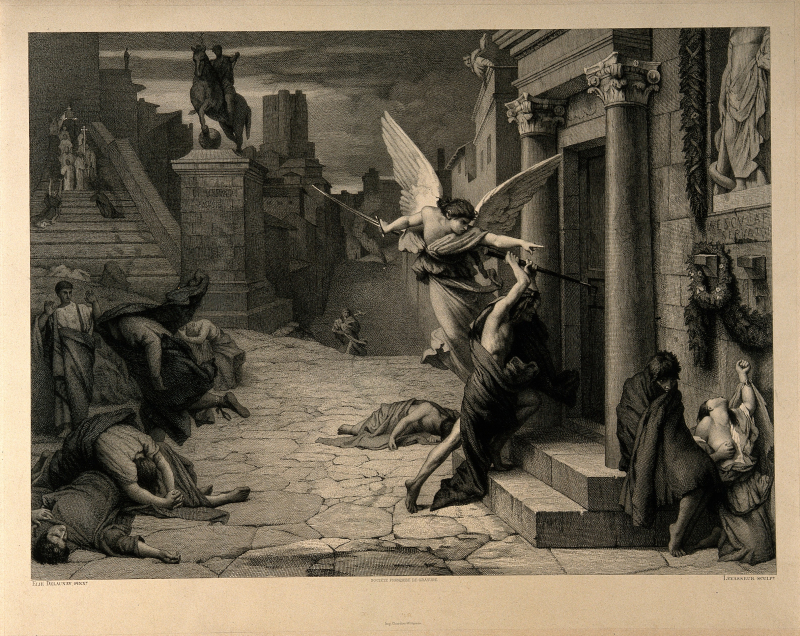
Antonine Plague -en.wikipedia.org -
Another interesting fact is that six years before becoming Emperor, he married his second wife. Septimius Severus, who was in his early thirties at the time, married Paccia Marciana, a woman from Leptis Magna, around 175. Marciana died of natural causes around the age of 186. Septimius Severus, now in his thirties, childless, and eager to remarry, began researching possible brides' horoscopes. According to the Historia Augusta, Severus heard of a woman in Syria whose marriage to a monarch had been prophesied, and he sought her as his wife. Julia Domna, an Emesene Syrian, was the woman in question. Julius Bassianus, a descendant of the Arab Emesene dynasty, was a high priest in the local cult of the sun god Elagabal. Julia Maesa, Domna's older sister, would become the grandmother of the future emperors Elagabalus and Alexander Severus.
In early 187, Bassianus accepted Severus' marriage proposal, and the couple married in the summer in Lugdunum (modern-day Lyon, France), of which Severus was governor. The marriage was joyful, and Severus admired Julia and her political views. Julia gained the most brilliant reputation by dedicating herself to letters and philosophy. Lucius Septimius Bassianus (after dubbed Caracalla, born 4 April 188 in Lugdunum) and Publius Septimius Geta were their two sons (born 7 March 189 in Rome).
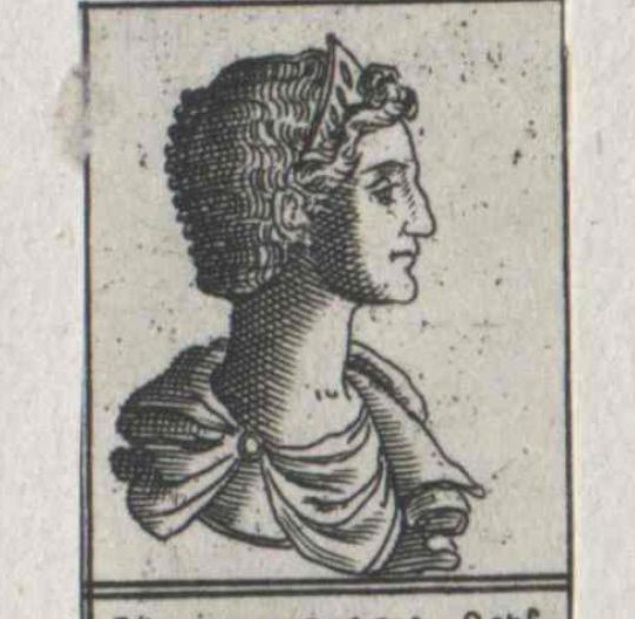
Paccia Marciana -en.wikipedia.org 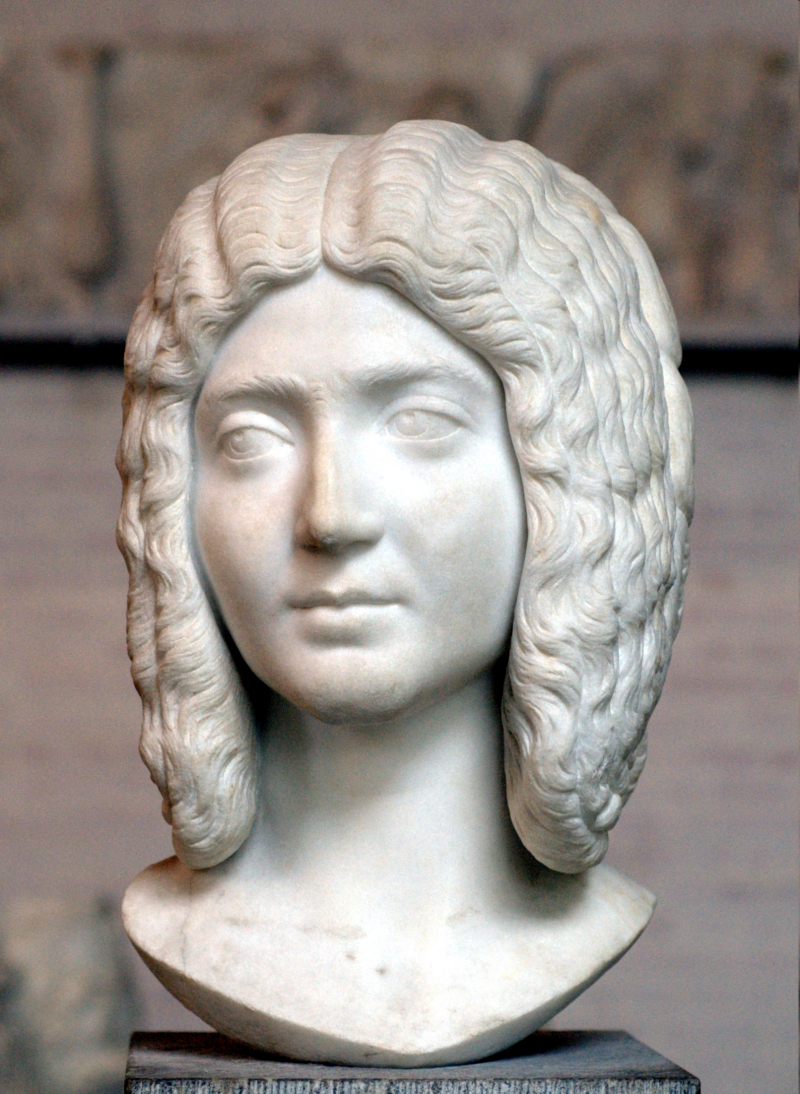
Julia Domna -en.wikipedia.org -
Severus was appointed governor of Pannonia Superior by Emperor Commodus in 191, on the advice of Quintus Aemilius Laetus, prefect of the Praetorian Guard. The following year, Commodus was assassinated. Pertinax was a popular emperor who was assassinated by the Praetorian Guard in early 193. In response to Pertinax's assassination, Severus' legion XIV Gemina proclaimed him emperor at Carnuntum. Nearby legions like X Gemina at Vindobona quickly followed suit. Severus rushed to Italy after assembling an army.
Didius Julianus, Pertinax's successor in Rome, had won the emperorship in an auction. Julianus was executed after the Senate sentenced him to death. Severus took possession of Rome without opposition. He executed Pertinax's assassins and dismissed the rest of the Praetorian Guard, replacing them with loyal troops from his own legions.
Syria's legions had crowned Pescennius Niger's emperor. At the same time, Severus thought it was reasonable to grant the status of Caesar to Clodius Albinus, the powerful governor of Britannia who had undoubtedly supported Didius against him. With his rear guard secure, he advanced to the east and defeated Niger's army at the Battle of Issus (194). During his battle against Byzantium, he had the grave of his fellow-Carthaginian Hannibal covered in exquisite marble.
He spent the next year suppressing Mesopotamia and other Parthian vassals who had supported Niger. Following that, Severus named his son Caracalla as his heir, prompting Albinus to be crowned emperor by his men and conquer Gaul. Severus traveled north to meet him after a brief stay in Rome. Severus defeated and killed Clodius Albinus in the Battle of Lugdunum on February 19, 197, with an army of around 75,000 soldiers, mostly formed of Pannonian, Moesian, and Dacian legions and a significant number of auxiliaries.
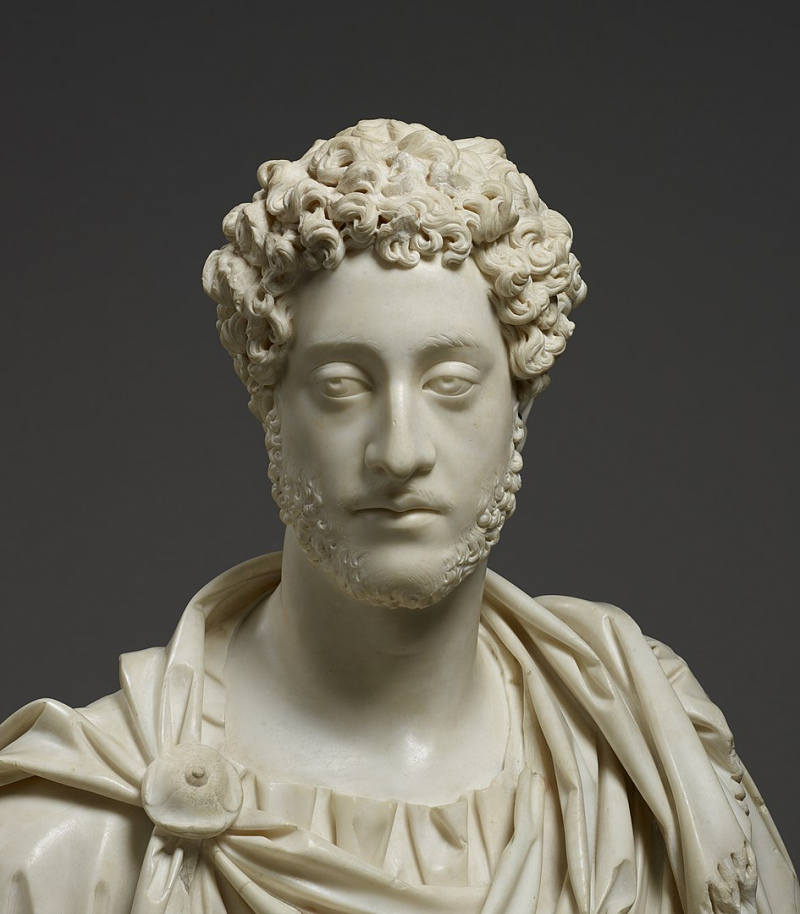
Commodus -en.wikipedia.org 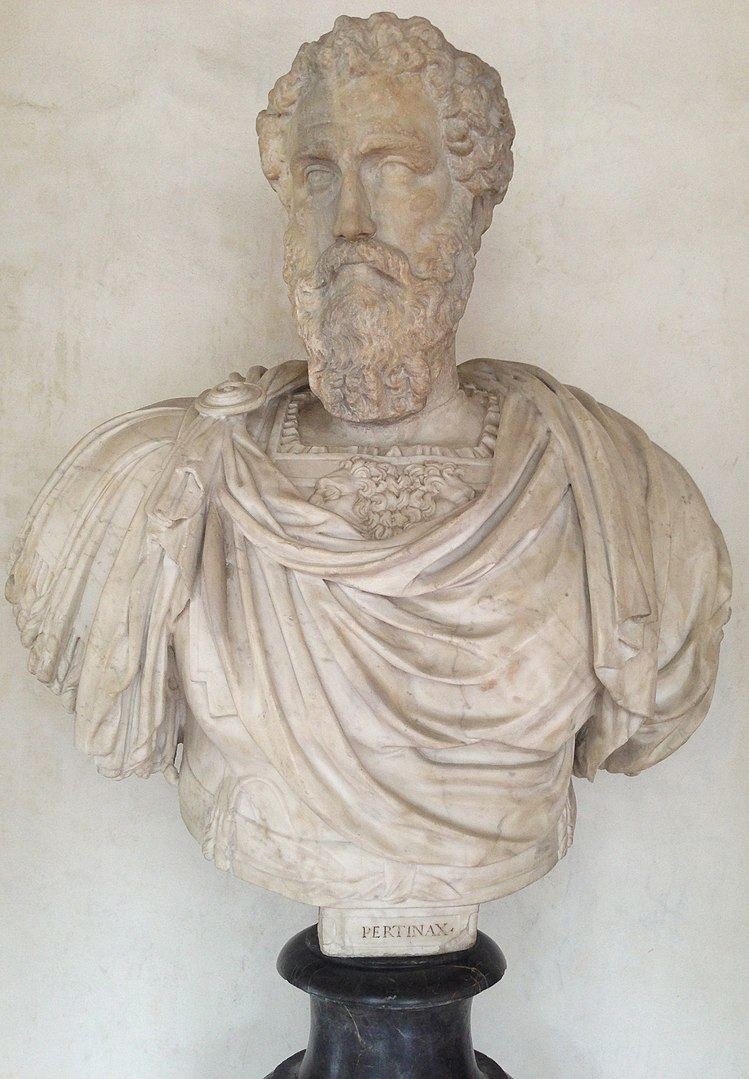
Pertinax -en.wikipedia.org -
One of the interesting facts about Septimius Severus is that Severus' relationship with the Senate was not good. He was unpopular with them from the start, having stolen power with the assistance of the military, and he reciprocated their feelings. On suspicions of corruption or conspiracy against him, Severus ordered the killing of a significant number of Senators and replaced them with his favorites. Despite the fact that his actions turned Rome into a military dictatorship, he was beloved among Romans for stamping out the pervasive corruption during Commodus' reign. When he returned from defeating the Parthians, he built the Arch of Septimius Severus in Rome.
However, according to Cassius Dio, after 197, Severus was significantly influenced by his Praetorian prefect, Gaius Fulvius Plautianus, who came to have nearly absolute control of the imperial administration. Simultaneously, a deadly power struggle erupted between Plautianus and Julia Domna, Severus' important and powerful wife, which had a relatively negative impact on the center of power. Fulvia Plautilla, Plautianus' daughter, married Caracalla, Severus' son. Plautianus' excessive power came to an end in 204 when the emperor's dying brother exposed him. Julia Domna and Caracalla accused Plautianus of conspiring to kill him and Severus in January 205. While attempting to plead his case in front of the two emperors, the powerful prefect was executed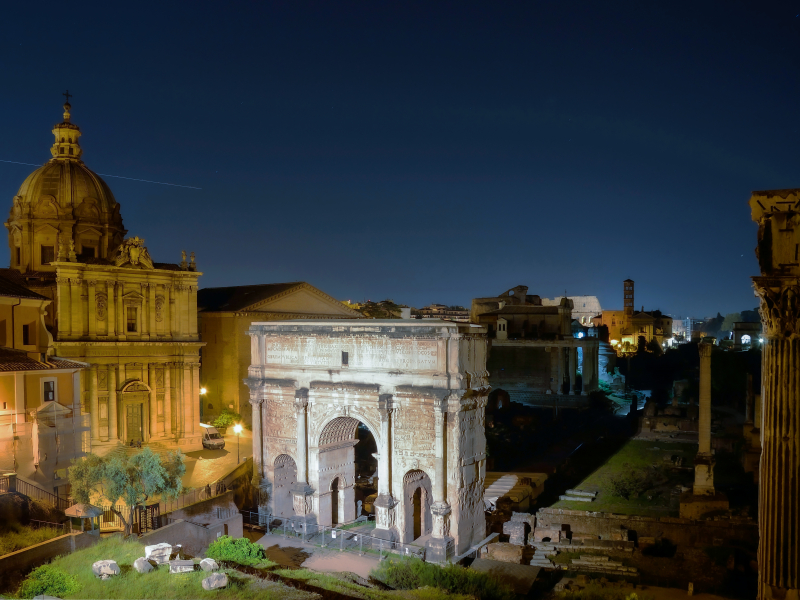
Arch of Septimius Severus -en.wikipedia.org 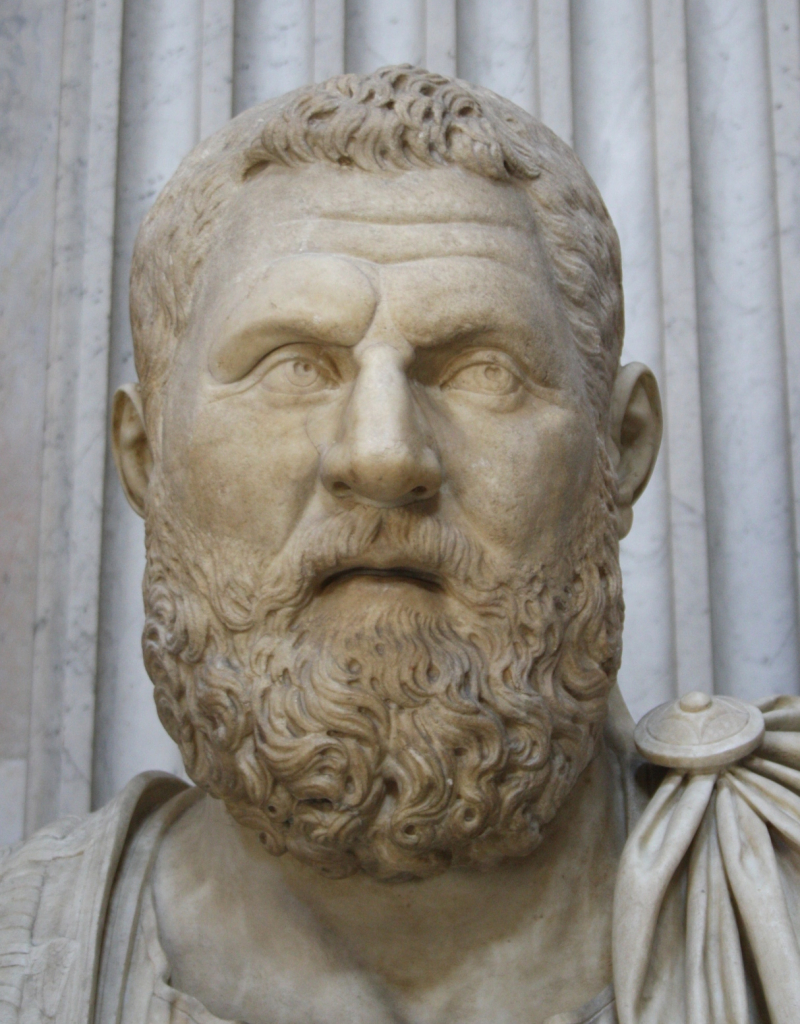
Gaius Fulvius Plautianus -en.wikipedia.org -
One of the interesting facts about Septimius Severus is that he was the winner of the Year of the Five Emperors. Pertinax, Didius Julianus, Pescennius Niger, Clodius Albinus, and Septimius Severus were the five Roman emperors during the Year of the Five Emperors in AD 193. This year saw the beginning of a period of civil strife in which various rulers vied for the position of Caesar.
The political upheaval began on New Year's Eve 192, with the assassination of Emperor Commodus. After Commodus was slain, Pertinax was appointed Emperor, but his attempts to institute reforms sparked opposition in the Praetorian Guard. They then plotted his murder, and Pertinax was assassinated while attempting to reason with the mutineers. He had barely reigned for three months. Didius Julianus succeeded Pertinax after purchasing the title from the Praetorian Guard, but was deposed by Septimius Severus and executed on June 1. The Senate declared Severus Caesar, but Pescennius Niger was hostile when he declared himself Emperor. This sparked a civil war between Niger and Severus, with both gathering soldiers and fighting across the empire's borders. Because of the conflict, Severus appointed Clodius Albinus as co-Caesar, whom he feared being a threat so that Severus would not have to worry about imperial governance. This decision freed him up to focus on the struggle against Niger. Most historians consider Severus and Albinus to be two emperors, despite the fact that they reigned concurrently. The Severan dynasty arose from the chaos of AD 193.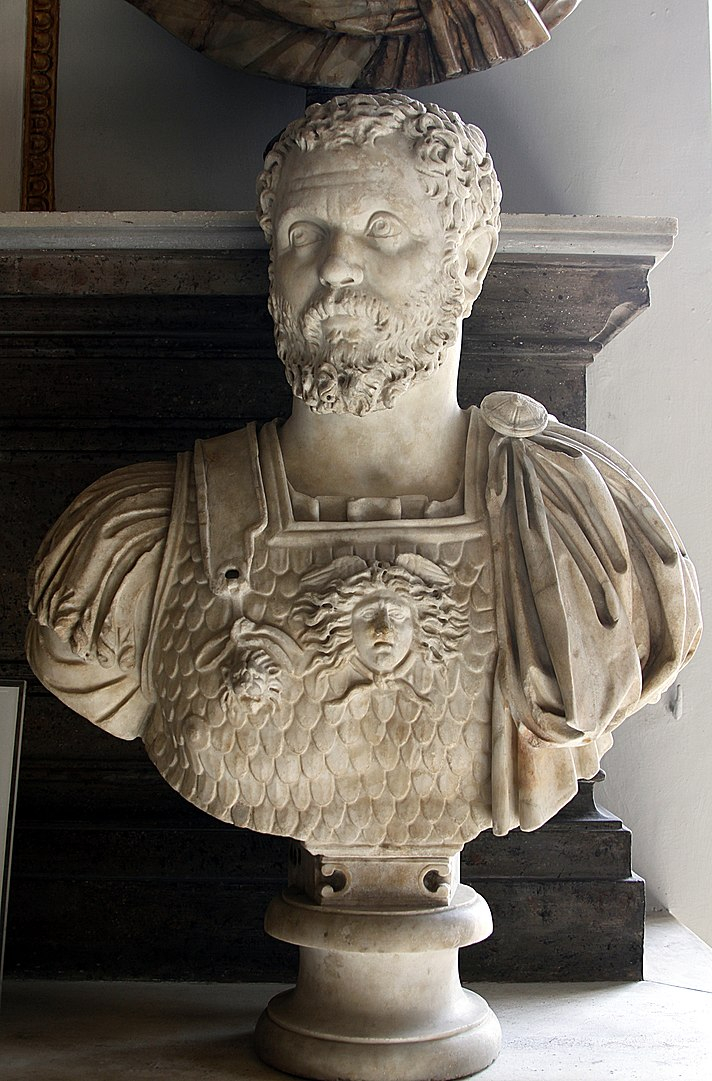
Clodius Albinus -en.wikipedia.org 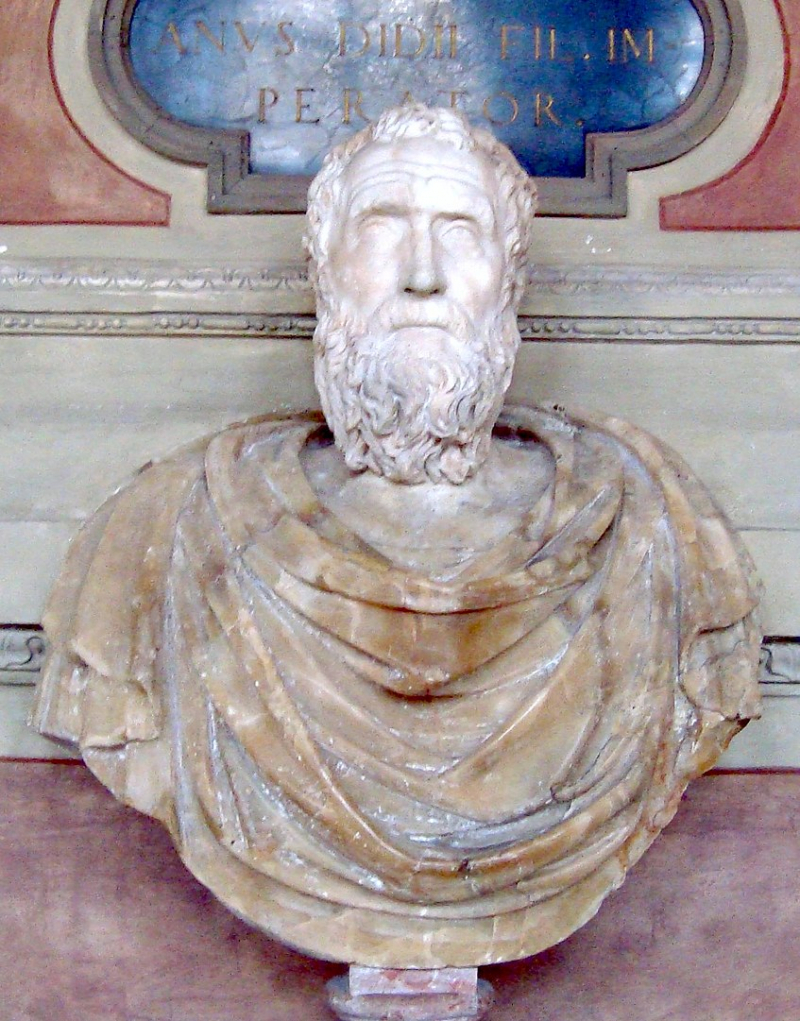
Didius Julianus -en.wikipedia.org -
It is a fact that during his reign, the Roman Empire expanded to its highest extent. In late 194, Severus launched a brief punitive war across the eastern border, annexing the Kingdom of Osroene as a new province. Three years later, in the Battle of Lugdunum in Gaul, Severus defeated Albinus. Following the strengthening of his dominance over the western provinces, Severus conducted a brief, more successful war against the Parthian Empire in the east, sacking their capital Ctesiphon in 197 and stretching the eastern frontier to the Tigris. He then strengthened and expanded the Limes Arabicus in Arabia Petraea.
Severus initiated a campaign in the province of Africa in late 202. Quintus Anicius Faustus, the legatus legionis or commander of Legio III Augusta, had been fighting the Garamantes along the Limes Tripolitanus for five years. He conquered several settlements, including Cydamus, Gholaia, Garbia, and their capital Garama, which was located over 600 kilometers south of Leptis Magna. The empire also annexed the settlements of Vescera, Castellum Dimmidi, Gemellae, Thabudeos, and Thubunae in Numidia. By 203, Roman Africa's whole southern boundary had been considerably enlarged and re-fortified. Desert nomads could no longer plunder the region's interior and return to the Sahara in safety.
Severus went to Britain in 208 with the purpose of conquering Caledonia. Modern archaeological findings shed light on the breadth and scope of his northern campaign. Severus most likely arrived in Britain with an army of about 40,000 men, given the size of some of the camps he built during his campaign. He fortified Hadrian's Wall and reclaimed the Southern Uplands up to the Antonine Wall, which he also fortified. Severus established a 165-acre (67-hectare) camp south of the Antonine Wall at Trimontium, where he most likely gathered his men. Severus then thrust his troops north past the wall into the Caledonian territory, aided and supplied by a powerful naval force. Following in the footsteps of Agricola, Severus repaired and garrisoned many abandoned Roman forts along the east coast, including Carpow.
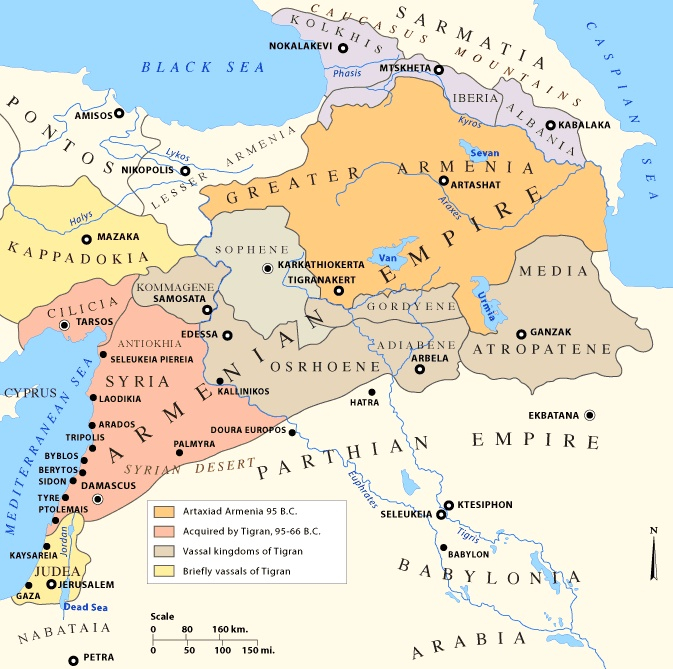
Map includes Osroene -en.wikipedia.org 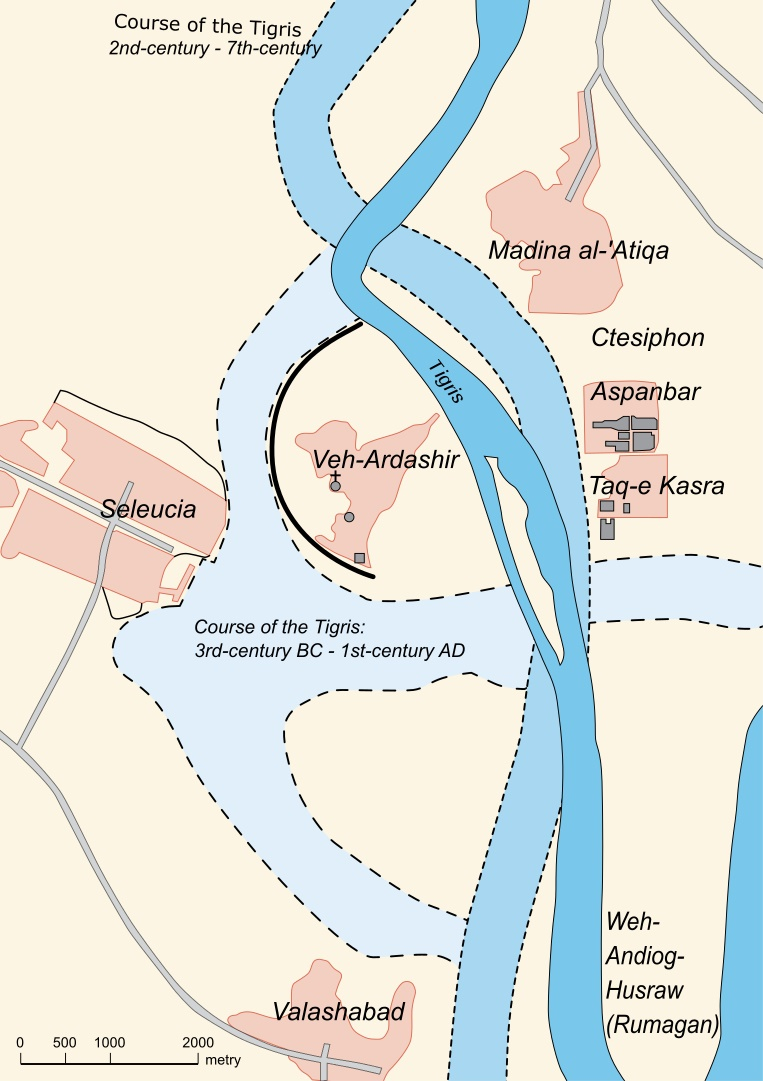
Map of the metropolis of Ctesiphon -en.wikipedia.org -
Another interesting fact about Septimius Severus is that he built one of Rome's most iconic arches. The Arch of Septimius Severus (Italian: Arco di Settimio Severo) is a white marble triumphal arch at the northeastern extremity of the Roman Forum dedicated in 203 A.D. to honor Emperor Septimius Severus and his two sons, Caracalla and Geta, for victory against the Parthians in two campaigns in 194-195 A.D. and 197-199 A.D. After Septimius Severus died, his sons Caracalla and Geta were initially co-emperors. Caracalla killed Geta in 212 A.D., destroying his memorials and removing all images or allusions to him from public buildings and monuments. As a result, Geta's portrait and inscriptions about him were removed from the arch.
After the second century A.D., it became usual for Roman emperors to build triumphal arches to announce their victories in a way and location that all Romans could view. The arch is notable because it was built as a deliberate weapon of imperialistic propaganda during the formation of the Roman state. It was commissioned to commemorate the Parthian victory as well as to extol the Severan dynasty. His victory over the Parthians began in 197 CE when he traveled to Nisibis in Mesopotamia to retake the city besieged by the Parthian empire. After retaking the Roman-occupied city of Nisbis from the Parthians, Alexander led his army to other Parthian cities such as Seleucia in Babylon and Ctesiphon, the capital city. Septimius Severus' campaigns resulted in the Romans gaining Northern Mesopotamia.
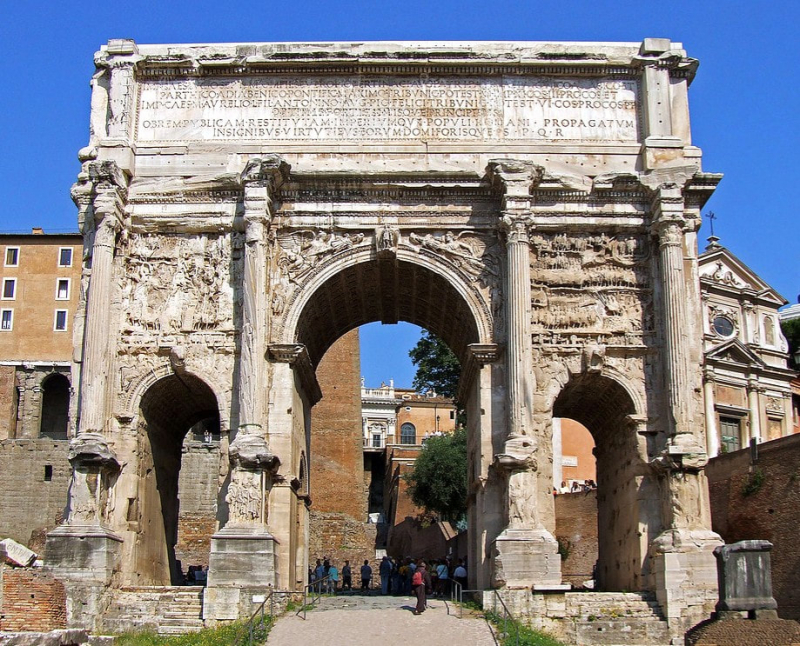
walksinrome.com 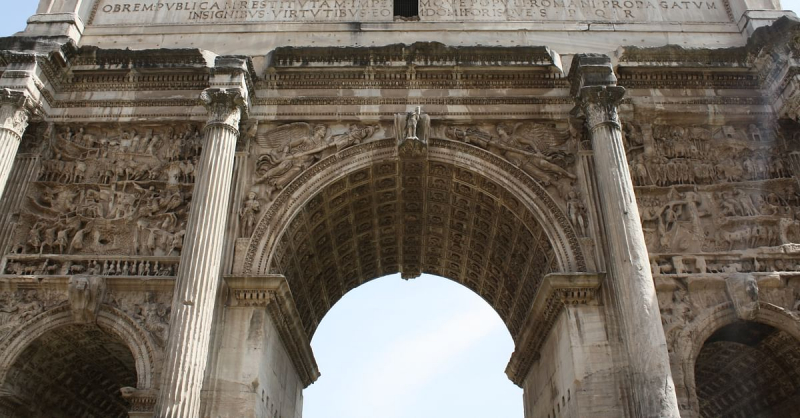
worldhistory.org





























